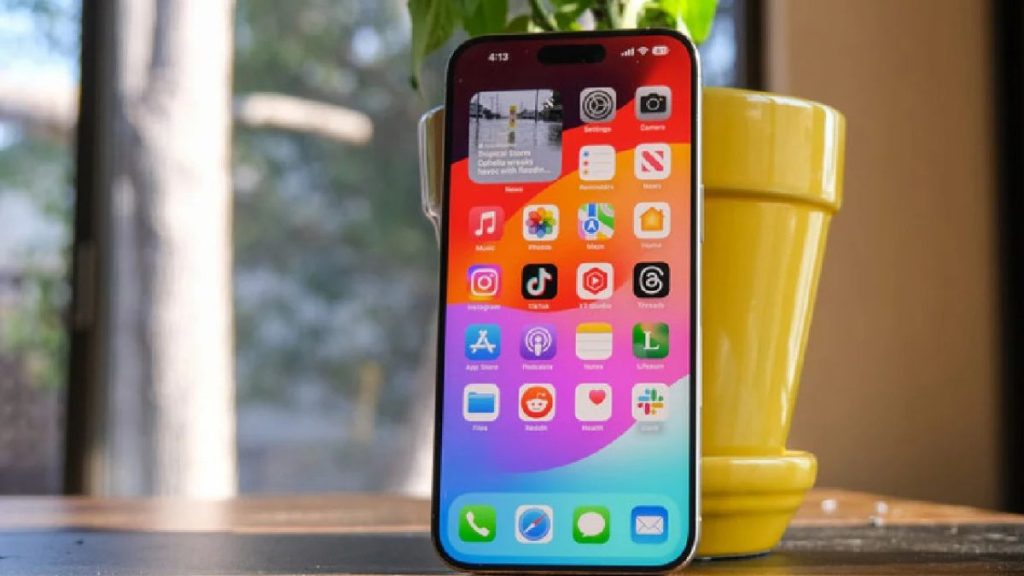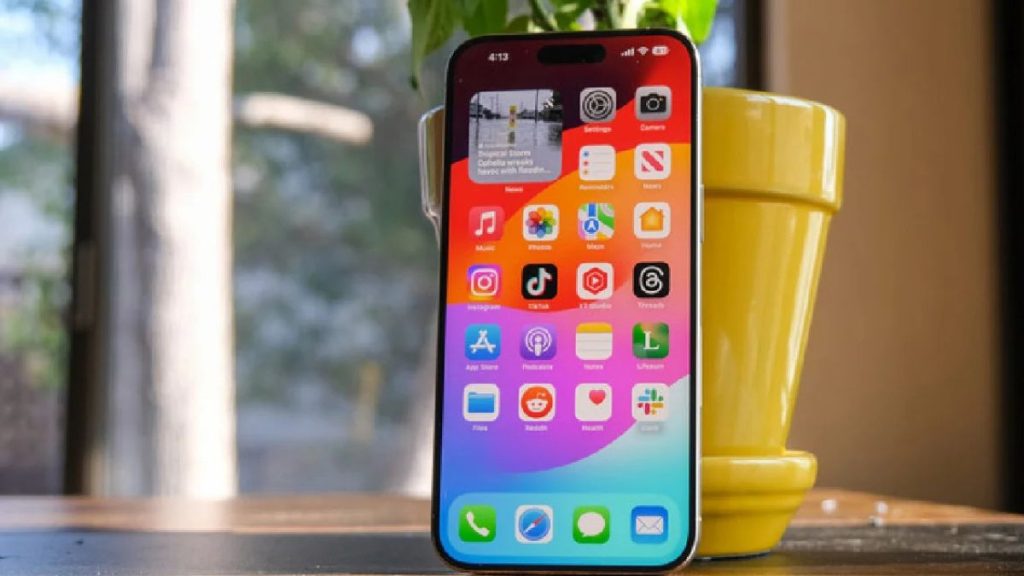Imagine a device that doesn’t just represent the next incremental update in smartphone technology, but a fundamental paradigm shift. A device so advanced that its name isn’t just a combination of its storage capacity and model number, but a statement: the CDiPhone. This isn’t a product you can buy today; it’s a speculative look into the future, a thought experiment exploring the zenith of what a personal computing device could become.
The “CD” in CDiPhone 1000 could stand for many things: “Concept Design,” “Carbon-Digital,” or perhaps “Cognitive Device.” The “1000” signifies not just a model number, but a milestone—a representation of the thousandfold leap in capability, intelligence, and integration we might witness in the coming decades.
This article delves into the hypothetical specifications, transformative technologies, and profound societal implications of such a device.
The Pillars of the CDiPhone.
The CDiPhone 1000 would be built upon several foundational technological breakthroughs, moving far beyond the current realms of silicon and software.
1. The Quantum-Carbon Hybrid Processor:
Forget about 3-nanometer chips. The CDiPhone 1000 would likely be powered by a hybrid quantum-classical processor. This isn’t a full-scale, room-temperature quantum computer in your pocket, but a system that uses quantum bits (qubits) for specific, complex calculations (like real-time AI modeling and decryption) alongside ultra-advanced carbon nanotube or graphene-based classical cores for general tasks. This would result in processing speeds thousands of times faster than today’s devices with negligible energy consumption and heat generation.
2. Photonic Data Transfer and Holographic Storage:
The bottleneck of electrical data transfer would be eliminated by using light. Internal data pathways and even wireless communications (6G/7G and beyond) would use photonics, allowing for instantaneous data sync and download speeds measured in terabits per second. Storage would move from flash memory to atomic-scale or holographic data crystals, making a 1000 Petabyte (1 Exabyte) storage capacity not only feasible but standard. This is enough to store over 200 million high-definition movies.
3. True Adaptive AI and Neural Interface:
The AI in the CDiPhone 1000 would be a true cognitive partner. Using a combination of on-device quantum processing and advanced neural networks, it would evolve from a reactive assistant (like Siri) to a proactive, predictive extension of your own cognition. It would anticipate needs, manage your digital life seamlessly, and even offer creative suggestions.
This would be coupled with a non-invasive Brain-Computer Interface (BCI). Through advanced sensors, it could interpret neural signals for basic commands, translate thoughts into text, or monitor focus and well-being, all without any surgical implants.
4. Self-Healing Morphic Design and Energy:
The physical form of the phone would be revolutionary. Its shell, made from a programmable polymetallic alloy or composite, could change its texture, rigidity, or even its shape slightly based on need. A small scratch would be “healed” in seconds as the material reflows. The display would be a flawless, bezel-less, foldable, and scratch-proof photon-projection screen that can adapt to any size.
Battery technology would leap from lithium-ion to something like ambient energy harvesting. The device would charge wirelessly over distance, through light (including indoor light), kinetic energy, and even differential thermal energy, making it perpetually powered.
5. Hyper-Advanced Sensing and Reality Integration:
The camera array would be replaced by a 360-degree LiDAR, radar, and multispectral sensor suite capable of mapping the world in atomic-level detail in real-time. Augmented Reality (AR) would be indistinguishable from physical reality, with photorealistic holograms projected directly into the user’s field of vision and interacting seamlessly with the physical environment.
Societal and Ethical Implications

A device this powerful is not without its profound questions:
- The Privacy Paradox: With a device that can read your neural signals and map the entire world, data privacy and security become paramount. Who owns your neural data?
- The Digital Divide: Would the CDiPhone 1000 create an unbridgeable gap between those who have access to such cognitive enhancement and those who do not?
- Humanity and Transhumanism: At what point does a tool that integrates so deeply with our biology and cognition begin to change what it means to be human?
The Calculation: Estimating the Storage
Let’s quantify one aspect: the 1000 Petabyte (1 Exabyte) storage.
- Today’s Standard: A current high-end iPhone offers 1TB of storage.
- The Projection: Assuming a conservative annual growth rate of 20% in storage density (compounding), we can calculate how long it would take to reach 1 Exabyte (1,000,000 TB).
The Formula for Compound Growth:Future Value = Present Value * (1 + Growth Rate)^Number of Periods
- Present Value (PV) = 1 TB
- Future Value (FV) = 1,000,000 TB
- Growth Rate (r) = 20% or 0.20
- Number of Periods (n) = ? (years)
Calculation:
1,000,000 = 1 * (1 + 0.20)^n
Solving for n:
n = log(1,000,000) / log(1.20) ≈ 13.81 / 0.07918 ≈ 174.4 years
This simple calculation shows that with a 20% annual growth, it would take over 174 years to go from 1TB to 1 Exabyte. However, this doesn’t account for paradigm-shifting technology like holographic storage or DNA data storage, which promise exponential leaps far beyond the current trajectory. The CDiPhone 1000 would require such a breakthrough, making its timeline not a linear projection, but a revolutionary event.
FAQs
Q1: Is the CDiPhone 1000 a real product?
A: No, the CDiPhone 1000 is a purely conceptual and hypothetical device. It is a thought experiment designed to explore the potential future endpoints of smartphone technology.
Q2: When could a device like this realistically exist?
A: Based on current progress, key technologies like viable BCIs, advanced quantum computing, and mature photonics are likely decades away from consumer-level integration. A conservative estimate for a device incorporating all these features would be the late 21st century.
Q3: How much would the CDiPhone 1000 cost?
A: The initial cost for a device leveraging such nascent and advanced technology would be astronomical, potentially in the hundreds of thousands or millions of dollars. Like all technology, the price would drop precipitously over time as manufacturing processes improved.
Q4: What does “CD” actually stand for?
A: In this context, it’s intentionally ambiguous to spark imagination. It could mean “Concept Design,” “Cognitive Device,” “Carbon-Digital,” or even “Central Digital” hub. The interpretation is part of the fun.
Q5: Would this device even be a “phone” anymore?
A: Absolutely not. The term “phone” would be a massive misnomer. It would be a personal cognitive mainframe, a reality engine, a health guardian, and a gateway to all digital and much of the physical world. It would be the central hub of human experience.
Q6: What are the biggest barriers to creating the CDiPhone 1000?
A: The barriers are primarily fundamental physics (stable, room-temperature quantum computing), materials science (creating self-healing alloys and perfect energy harvesters), neuroscience (non-invasive, high-fidelity BCI), and immense software engineering challenges in creating a stable AI and OS for such a system.
Conclusion
The CDiPhone 1000 is more than a fantasy; it is a North Star for technological ambition. It challenges engineers, designers, and ethicists to think bigger, to push harder, and to consider the profound implications of the tools we are building. While we may not see it on store shelves in our lifetime, the incremental innovations made every year are small, yet crucial, steps on the long road toward making such a revolutionary device a reality. It represents the ultimate convergence of humanity and technology, a future where our devices are not just smart, but are intelligent, intuitive, and inseparable extensions of ourselves.

